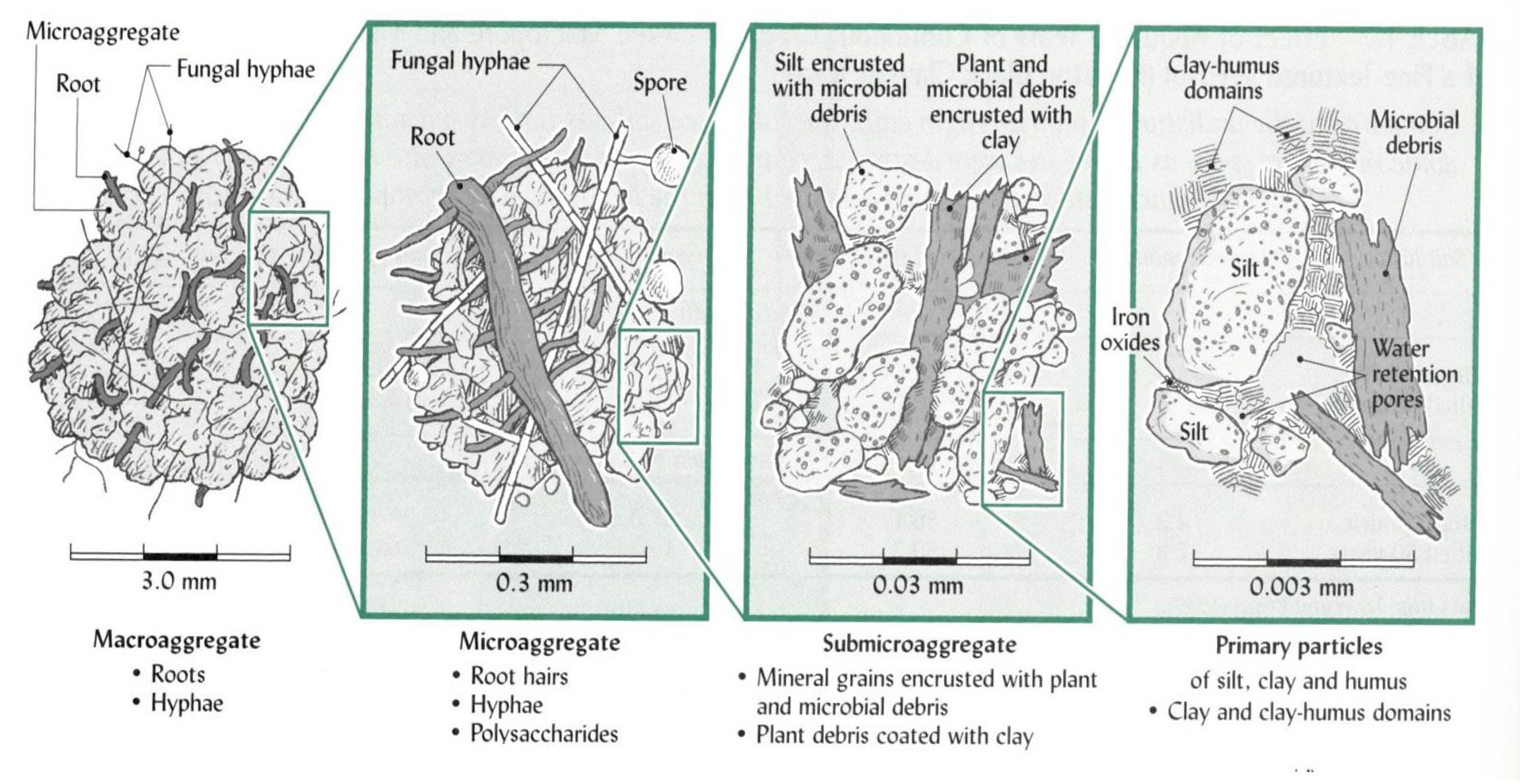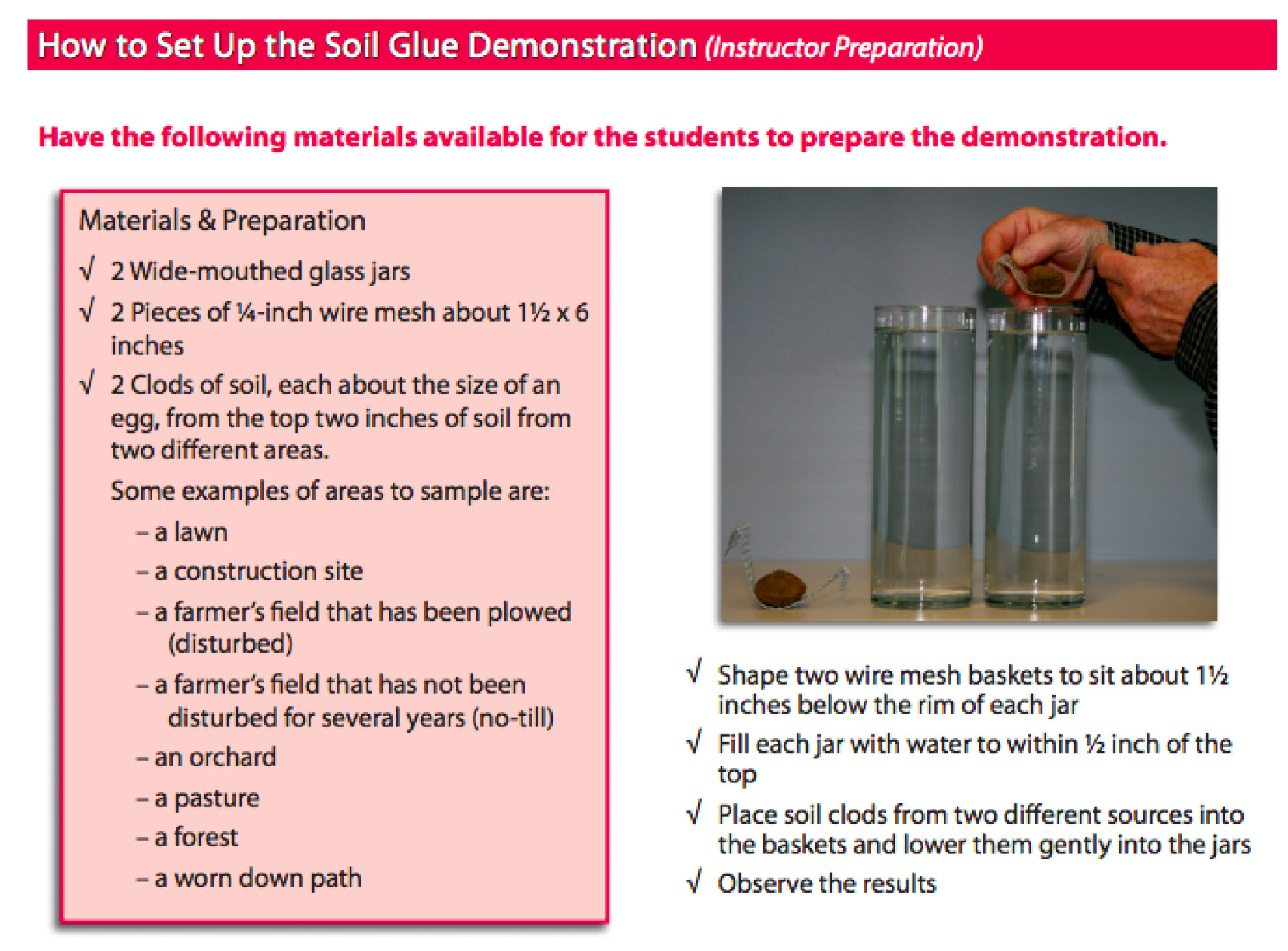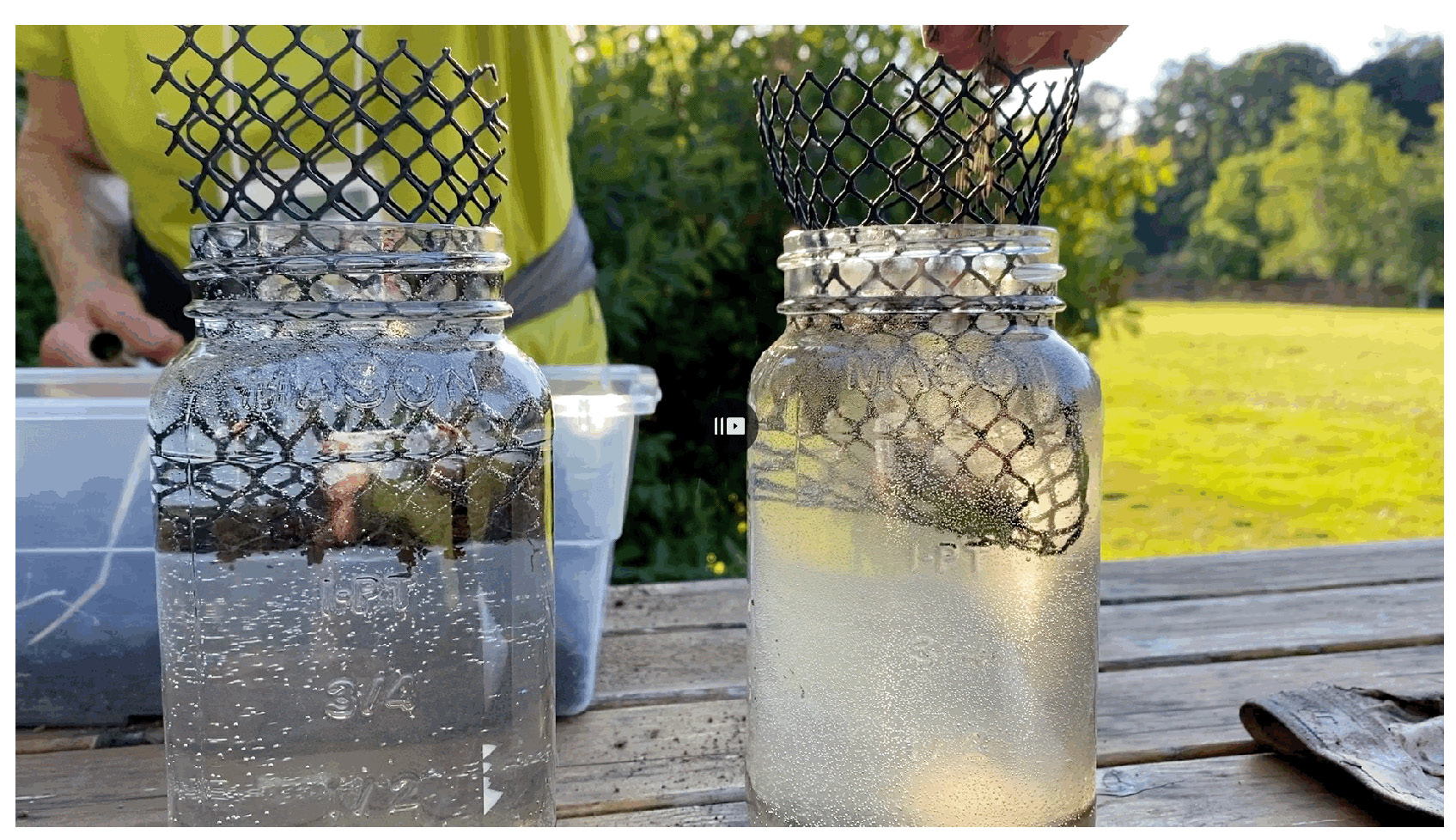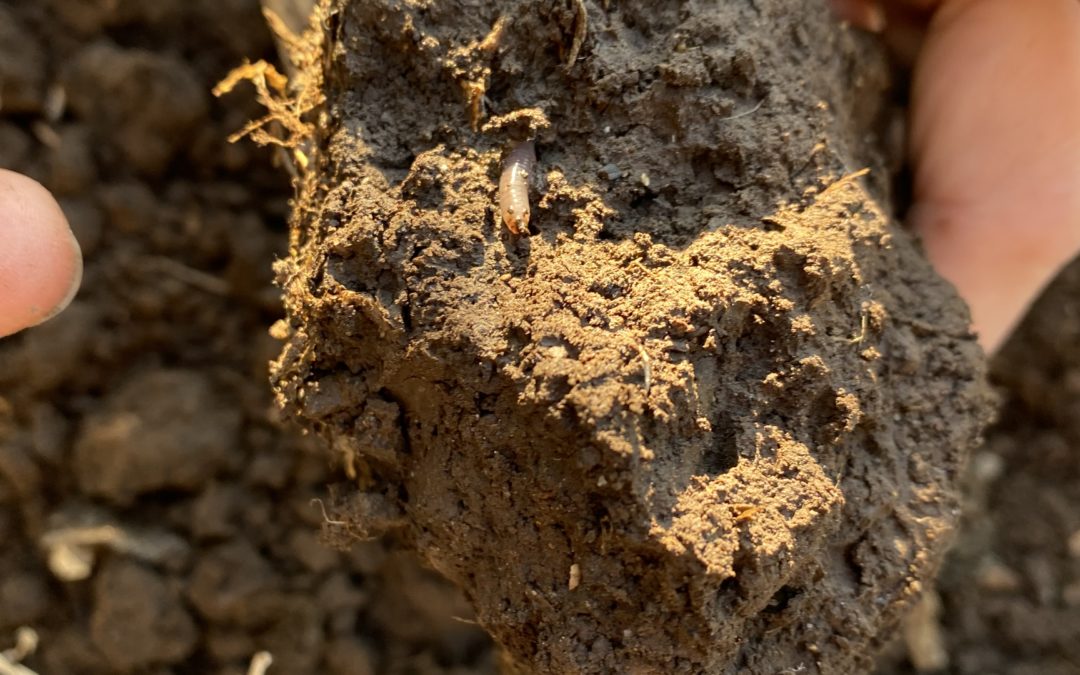By Stephanie Wagner, OLWC Board Chair
What makes up Healthy Soil?
“We Need Space!”
This is the cry from plant roots and all the small and microscopic critters that live in soil. We all know that plants need water but did you know that their root systems also need air? The same goes for all bacteria, protozoa, algae, fungi, insects and spiders, round and segmented worms that live in soil and make up a crucial part of the soil community. They all need water and air – and where is water and air found in soil? In the spaces between soil particles. Healthy soil is 50% solids and 50% space.
- 50% Solids
45% Minerals – weathered rock (sand, silt, clay)
5% Organic matter and living organisms - 50% Space for air and water.
The solids are glued together into clumps by excretions from soil organisms. These clumps are called soil aggregates. The aggregates make spaces or pores for water and air. These spaces also provide habitats for microorganisms that support decomposition and nutrient cycling.
Where do these spaces come from?
They comes from several sources, all linked to the living components in soil. Plant roots push through the soil and when they die and decompose they leave space. Soil microorganisms make space by gluing soil particles together. Mycorrhizal fungi and soil bacterial actually produce organic compounds that bind soil particles together.
Microaggregates are silt and clay particles tightly bound by organic materials. This provides a long-term pool for organic matter.
Macroaggregates are a collection of silt/clay particles, microaggregates, and organic matter. Plant roots, mycorrhizae and earthworms are major contributors to the formation of macroaggregates. These larger aggregates have a shorter breakdown time, providing an organic matter source for roots, bacteria, and fungi.

What is Aggregate Stability?
Aggregate stability is an important indicator of soil quality. This refers to the ability of soil aggregates to resist disruption when forces, such as water, are applied.
You can demonstrate aggregate stability with an easy soil glue activity:


Aggregates without organic matter gluing it together break apart and the fine sediments become suspended in the water column, while the stable aggregates settle quickly to the bottom retaining their clumped consistency.
Why is aggregate stability important?
Aggregation prevents erosion, maintains water retention, and stimulates plant root growth. Stable aggregates are secure against rainfall and water movement preventing water erosion. Soil that breaks down in water will release individual soil particles that can seal the soil surface and clog its pores. These close pathways for water and air entry into soil and can also restrict emergence of seedlings from a soil.
Soil that breaks down in water will seal the soil surface and clog those pores that are so important for microbes, as well as water and air pathways. Soil that doesn’t form aggregates can lead to soil that is highly compacted. This type of soil is hard for plants to grow in or for water to trickle through.
Back to those Soil Microcrobes!
Adding organic matter to your soil will increase aggregate stability, primarily after decomposition begins and microorganisms begin breaking down the matter. Soil microorganisms produce many different kinds of organic compounds, some of which help to hold the aggregates together. The type and species of microorganisms are important. Fungal mycelial growth binds soil particles together more effectively than smaller organisms, such as bacteria.
Long-term solutions for maintaining or improving soil infiltration include practices that increase organic matter content and aggregation and minimize runoff, soil disturbance, and compaction. Increases in organic matter content result in increased aggregation and improved soil structure, which lead to improved infiltration rates.
So next time you water a patch of soil look at how quickly the water is absorbed. Do you see a few air bubbles? If the water seeps in quickly that is an indicator of space. Those air bubbles come out of the soil as air is displaced by water. When the water is absorbed by plant roots or used by the herd of soil organisms, air moves back into the spaces. Space is an integral part of healthy soil. Are you working to be sure your soil has space?
Resources:
https://www.nrcs.usda.gov/Internet/FSE_DOCUMENTS/nrcs142p2_051280.pdf
https://www.nrcs.usda.gov/Internet/FSE_DOCUMENTS/nrcs142p2_053287.pdf
https://www.agweek.com/business/4434742-start-digging-aggregation-soil-health-indicator

